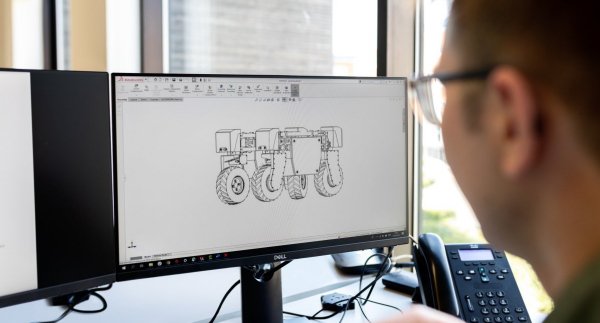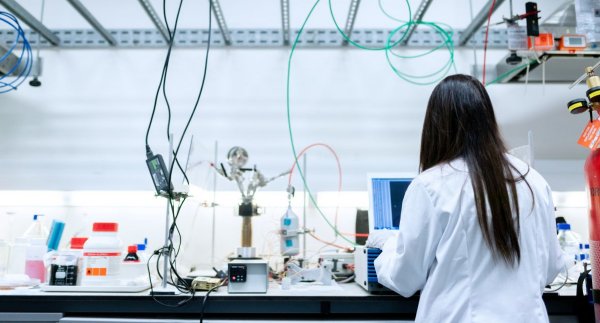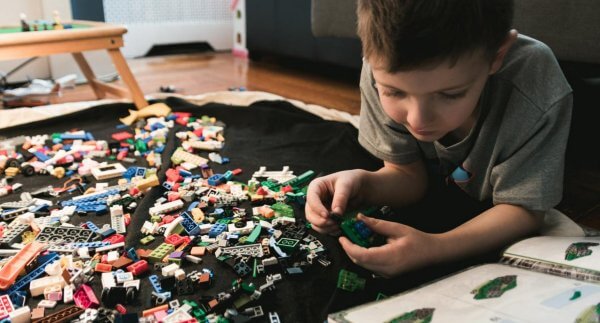There has been a lot of talk about the importance of introducing STEM topics to kids lately. Almost every job available today has been impacted by our advances in science and technology. Therefore, a firm grasp of science concepts continues to be a huge advantage.
There are tons of great science and math classes for kids available and it’s nearly impossible to avoid technology, but what about engineering? What is engineering for kids? And how is it different from science?
While science is typically about the discovery of facts, a simple engineering definition for kids is that it is the application of scientific discoveries to solve problems.
That’s why it’s so important!
Learning engineering helps kids to think critically about the problems they find and come up with solutions. It helps them to build a growth mindset. And ultimately, it will help them to change the world!
The Engineering Design Process
Despite that significant difference, on the surface, Engineering really doesn’t look all that different from the general Sciences. Science is about answering questions. Engineering is about solving problems. They really are very similar! But there are some key differences in the ways they work that set them apart.
In Scientific research, there is a set of steps called the “Scientific Method ”. This is commonly used to get from a question to an answer. It’s taught in most schools, and you’re likely already familiar with its different parts. Engineering has its own version, called the Engineering Design Process, that takes engineers from a problem to a solution. Here’s how it works:
ASK
The Ask step is all about identifying a problem in need of a solution. Engineers are working on all sorts of problems. These range from finding new ways to get energy and stronger building materials to figuring out how to colonize Mars.
IMAGINE
The Imagine step is essentially a brainstorming session. It’s about throwing ideas around to see if something sticks. There aren’t any wrong answers here. It’s all about creativity!
PLAN
Planning is where things start to get real. It’s all about taking the most promising ideas from the imagine step and figuring out how to start making them work in real life.
CREATE
The Create step is where engineers take their plans and make them real!
EXPERIMENT
Now comes the fun part! The Experiment step is all about testing out the creation to see if it works. Does it solve the problem at hand? Are there any new problems introduced?
Most new ideas don’t work on the first try. In fact, learning how to deal with failure is a major component of good engineering. After all, as the author William Whewell said, “Every failure is a step to success!”
IMPROVE
It’s time to iterate! Just because an experiment is successful doesn’t mean that it can’t be improved. The Improve step is about looking over the results of the experiment and looking for ways to make your solution better, simpler, or more efficient. It is rare that a solution can’t be improved in some way.
Types Of Engineers
By some counts, there are as many as 50 different types (or more!) of engineering professions out there, but all of them use these same basic steps to get the job done. That’s pretty impressive since many types of engineering have very little in common.
Many people assume that engineers are limited to jobs that create new kinds of machines or inventions, but really that’s only a single category of engineer (Mechanical). In reality, engineers are an important part of almost every scientific field, making engineering one of the most varied and interesting types of career out there!
Here are a few of the most popular kinds of engineering jobs today.
Mechanical Engineers
Mechanical Engineers are what many people think of when they consider engineering. These are the people who work to apply physics and simple machines to create all the amazingly complex machines that we use on a regular basis, from can openers to robots!
Civil Engineers
Civil Engineers work on building projects that help to make life better for everyone. All sorts of public projects, like bridges, dams, sewers, and subway systems all fall into the category of civil engineering.
Electrical Engineers
Electrical Engineers work with all sorts of electrical systems. They’re part of huge projects like wind farms and they are involved in the intricate electrical pathways found on tiny microchips. Electricity is such an integral part of our modern society that there are very few projects done today that don’t include electrical engineering in some form.
And more!
Other branches of engineering include Chemical engineering, Nuclear engineering, Industrial engineering, and more. Engineers are part of so many different kinds of projects, it’s practically impossible to list them all.
How to Teach Engineering to Kids
With such a wide field, it can be a little daunting to try to figure out how to add opportunities to learn engineering to your kids’ schedule, but it’s worth it! As everyone’s favorite Science-guy, Bill Nye, says, “There’s nothing I believe in more strongly than getting young people interested in science and engineering, for a better tomorrow, for all humankind.”
Luckily, when I’m not writing articles like this one, I’m a homeschooling science-dad to two little engineers of my own!
Here are some of the different products, books, and activities that I would recommend introducing engineering for kids.
Engineering Toys
For kids engineering toys, I highly recommend toys that can be used for imaginative free play. These are toys that can be used over and over again and are super helpful both for building critical thinking skills and for getting kids familiar with basic physics concepts.
Ages: 3+
Magnatiles are amazing! My kids have been playing with our Magnatiles sets for years at this point and they still feature prominently in the vast majority of their games. They love constructing elaborate buildings and vehicles for their games, and I’ve been seriously impressed at the flexibility of a toy that’s essentially just some magnetic shapes.
Ages: 5+
I had my doubts when my wife bought our kids a huge tub of brain flakes, but my kids took to them immediately and created some pretty cool constructs with these. Unlike most block sets, building with brain flakes isn’t as easy as stacking blocks on top of each other, so making things with them really gets my kids to think outside the box.
Ages: 5+
I played with LEGOs as a kid and they are, without a doubt, still the king of creative toys. Younger kids will love using LEGOs for creative play, but the sets for older kids add in some pretty cool moving pieces! We even got a set that let me build a gearbox with my kids!
Ages: 8+
The K’NEX model sets take building set complexity to the next level. I love working through the different roller coaster sets with the kids and exploring how more complex machines work. They aren’t super great for younger kids, but if the foundation is there, they can be really educational
Recommended: Coding Toys for Kids
Kids Engineering Kits
While engineering kids toys are mostly focused on free play and creativity, engineering kids kits are all about exploring specific engineering concepts. They can be highly educational and come with easy-to-follow directions that help to make complex ideas much more approachable.
Thames & Kosmos Simple Machines Kit
Ages: 8+
I LOVE Thames & Kosmos kits! While I linked to the Simple Machines one, they have several different kits available that help you to explore all sorts of engineering concepts with kids. Their instruction books do a great job of breaking down concepts and the kits themselves are beautiful. Definitely check them out.
Snap Circuits: My Home Plus Kit
Ages: 8+
Electricity is a complex enough topic without needing to have kids work with fiddly wires and poorly labeled machine pieces. Snap Circuits does an amazing job of taking all those connections and turning them into snappable blocks that can be used to build all sorts of neat electronic projects. Their instruction booklets start with really basic projects and slowly ramp up the difficulty, making the lessons remarkably easy to follow.
MindBlown DIY Model Engine Kit
Ages: 8+
I have not yet had the chance to build a complete model engine with my kids, but this is the Engine kit that I personally have my eye on for when the day comes. I love that the casing is made from clear plastic so kids can see everything happening inside, and since this kit is made by Discovery, it has some solid brand recognition going for it.
Engineering Books For Kids
Ages: 3-6
Overcoming failure is such an important part of engineering, and of life in general! Rosie Revere introduces this concept in a big way while holding kids’ attention with a great story and beautiful illustrations. Really, all of the books in this series are worth looking into. And when your kids get a bit older, also be sure to check out the Questioneer’s Project books, too!
Rosie Revere’s Big Project Book for Bold Engineers (Ages 5-7)
The Boy Who Harnessed the Wind
Picture Book | Young Readers Edition
Ages: 4-10 (Picture Book) | 9+ (Young Readers Edition)
I picked up the picture book version of this story from the library when my kids were younger and it was a hit! It’s the story of a young boy in Malawi who overcomes adversity and brings electricity to his village by building a wind-powered generator. It’s inspirational, and gets kids wondering what they might be able to do if they put their minds to it!
If you’re planning on reading it together as a family, the Young Reader’s Edition is a longer version of the story that goes into a bit more detail and is better for families with older kids.
Ages: 7-10
DK Books is one of my go-to publishers for educational books for kids in large part because of how they make learning fun, and this book is a great example.
How Machines Work: Zoo Break isn’t just an engineering book for kids, but it also has interactive engineering pullout examples in the form of gears, levers, pulleys, and more!
Klutz Lego Gear Bots Science/STEM Activity Kit
Ages: 8-12
While this is technically a book, it is also an amazingly fun LEGO-based engineering kit that’s perfect for kids who love LEGO!
There are several different LEGO STEM activity kits by this publisher, and each book comes with the specialized LEGO pieces needed to bring the included activities to life. The books themselves do a pretty good job of explaining what’s happening in each project, and it is super satisfying to see everything working when it’s all put together.
Fun Engineering Projects And Activities
While books about engineering for kids are great, the best way to teach kids engineering is to let them practice solving problems and building models in the real world!
These are some really awesome engineering kids projects and activities that you can do with your kids, each of which I have personally done with my own kids, more than once. Each one has its own challenges, and they can get a bit messy at times, but that’s all part of the fun!
For younger engineers, I definitely suggest a healthy dose of adult supervision, especially when cutting things.
Suggested Ages: 4+
Who didn’t play with those little parachute toys as a kid? This engineering challenge is all about making a plastic bag parachute to safely carry a small weight or action figure to the ground. Making one that works well can be a bit tricky for the youngest engineers, but with a little trial and error, you should be able to get it going!
Suggested Ages: 4+
This is some fun chemical engineering for kids where they make a pH-testing liquid out of red cabbage juice. If done properly, the tester will change colors depending on the pH levels of the liquids it’s exposed to. It’s a pretty simple experiment and really cool glimpse into chemistry!
Suggested Ages: 5+
This boat uses the tension from wound rubber bands to propel itself across the surface of the water like a small motorboat. It’s a fairly simple concept that can be expanded upon by older kids, and it ends up being a ton of fun!
Suggested Ages: 5+
Electricity can be pretty hard to understand for something that is literally all around us, but if your kids are interested in learning about it, this is where you start. Once you’ve explained the basic circuit, it’s pretty easy to build upon that knowledge. You can add switches, or even use a small battery powered motor instead of lights to really get things moving.
Suggested Ages: 6+
The egg drop challenge is a classic kids engineering challenge that involves building a container for an egg that will keep it safe when dropped from somewhere high. With younger kids, I suggest dropping the egg from eye level, but I’ve seen drop challenges where the eggs have been dropped from rooftops or even from helicopter doors.
Cardboard Robotic Hydraulic Arm
Suggested Ages: 7+
We’ve done this one several times at this point, and each time I’m struck by how cool it is!
Building the arm does require a good bit of cutting out cardboard and there’s super glue involved, so definitely provide support for younger engineers.
If you don’t want to cut pieces out yourself, there are some hydraulic arm kits you can buy online that will help teach the same principles, but I’ve not personally purchased any, so I don’t have a specific one to suggest.
Have fun!
Engineering Classes For Kids
Engineering is a HUGE field and, at some point, it becomes a lot easier to set kids up in engineering classes instead of teaching it all on your own. Luckily, there are plenty of places out there that do an amazing job of providing resources and classes for kids interested in digging deeper.
Suggested Ages: 4-14
Engineering for Kids has some of the most comprehensive engineering class sets that you can find including both in-person and virtual classes covering a huge variety of engineering concepts and programs.
Engineering for Kids offers programs with focuses on everything from Aerospace engineering to Robotics, so there’s sure to be something worth looking into.
Suggested Ages: 4+
Outschool is a virtual learning platform that offers video chat-based classes on pretty much every subject you could possibly think about. I’ve used them several times with our kids and have mostly been impressed, but it is worth pointing out that while individual classes may be outstanding, the quality of the class highly depends on the competence of the specific teacher leading it. Be sure to check different teachers’ reviews before signing up for a class to be sure you’re getting exactly what you need.
Kids Can CAD 3D-Printing Class
Suggested Ages: 7-17
Computer Assisted Drawing (CAD) programs are tools that real-world engineers and architects use to create 3D models of their projects. Kids can CAD leans into teaching kids how to use these tools for creating 3D printable models that they’ve designed themselves!
3D printing is set to increase in popularity and usefulness as time goes on, so getting the opportunity to learn these skills early is amazing.
CodeWizardsHQ Coding Classes for kids
Suggested Ages: 8-18
Coding is an increasingly important skill both in engineering and in the workplace in general, and CodeWizardsHQ is easily one of the best online learning platforms around for teaching your kids to code. Unlike many single-course coding programs, CodeWizardsHQ is a complete coding curriculum with live instructors that takes kids from complete beginners to competent coders.
They have a 93% student success rate and even have an internship program for their older students that gets their students real-world work experience! It’s an amazing program for kids of all ages and one of the absolute best programs for teaching coding for high school students, no matter their experience levels.



